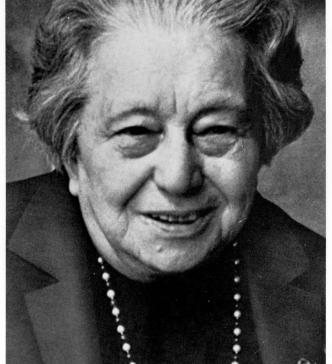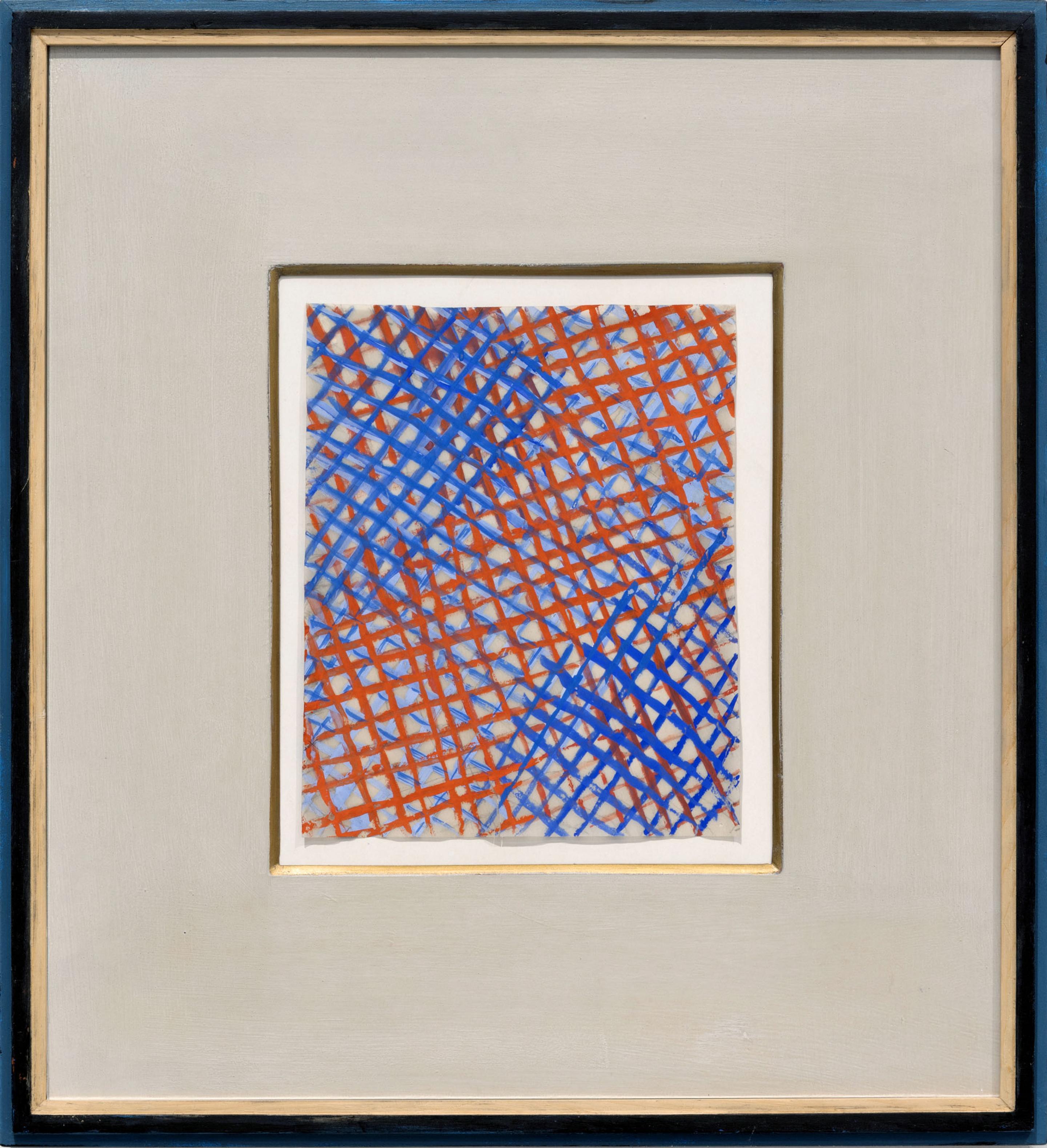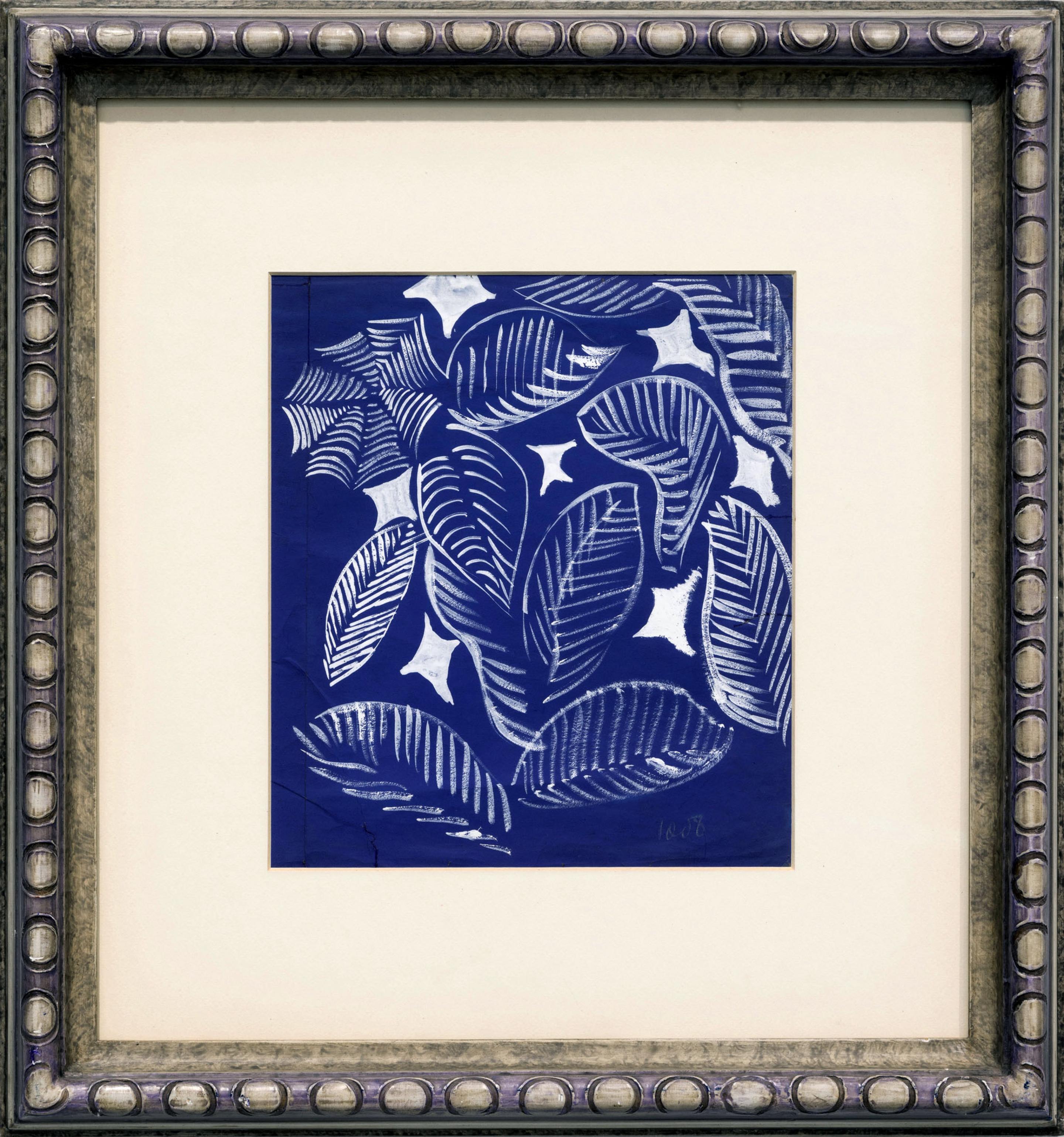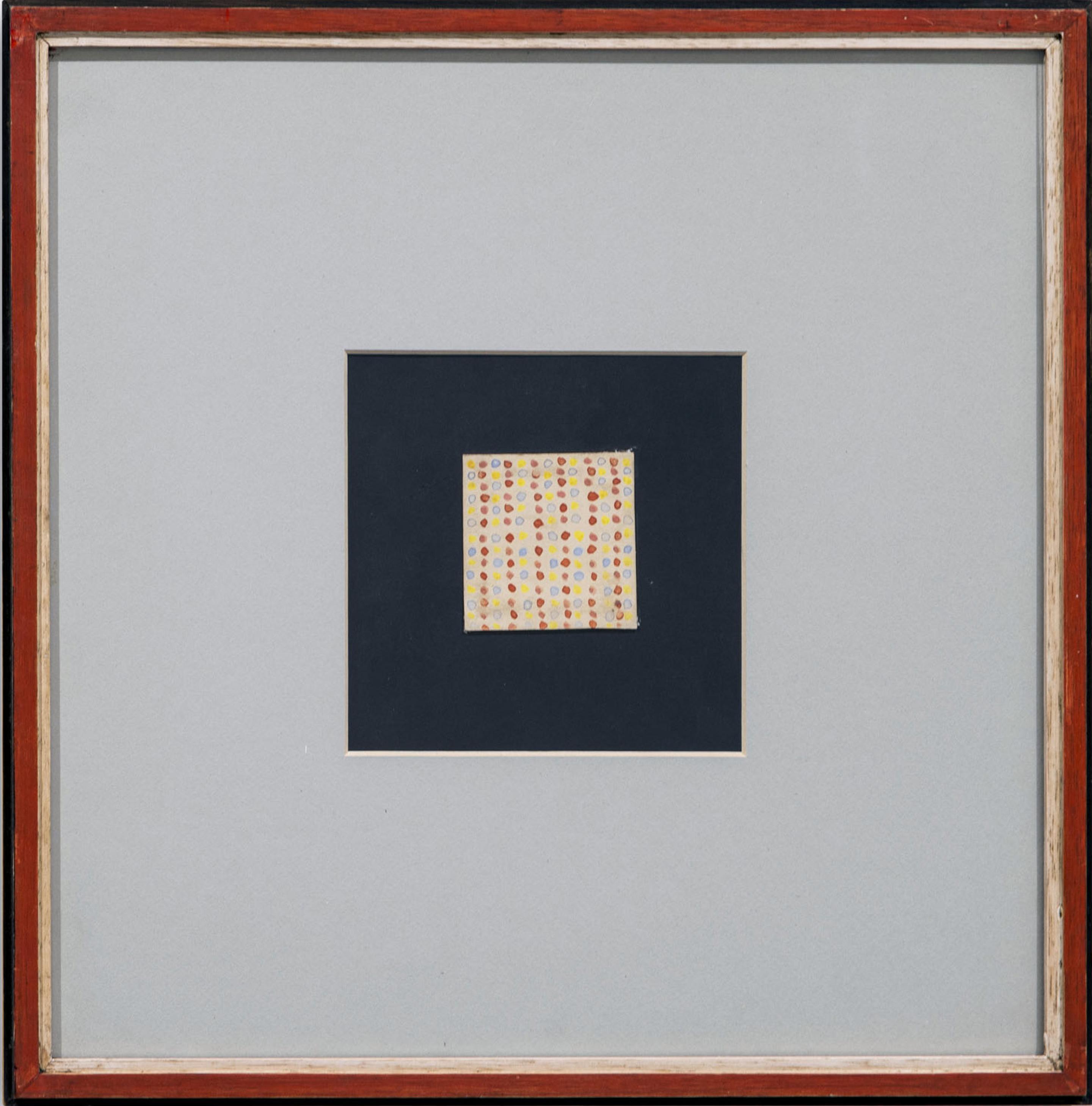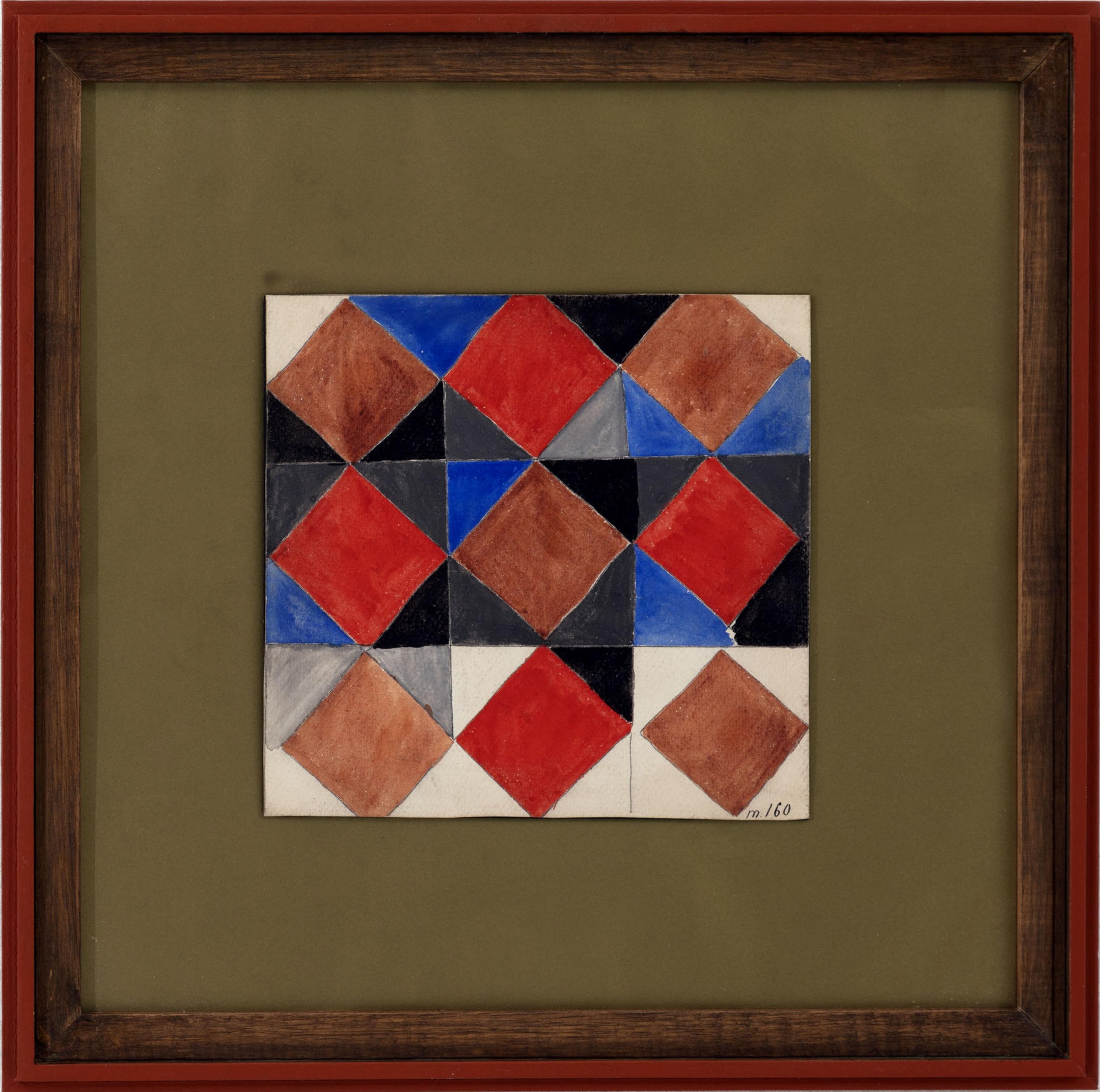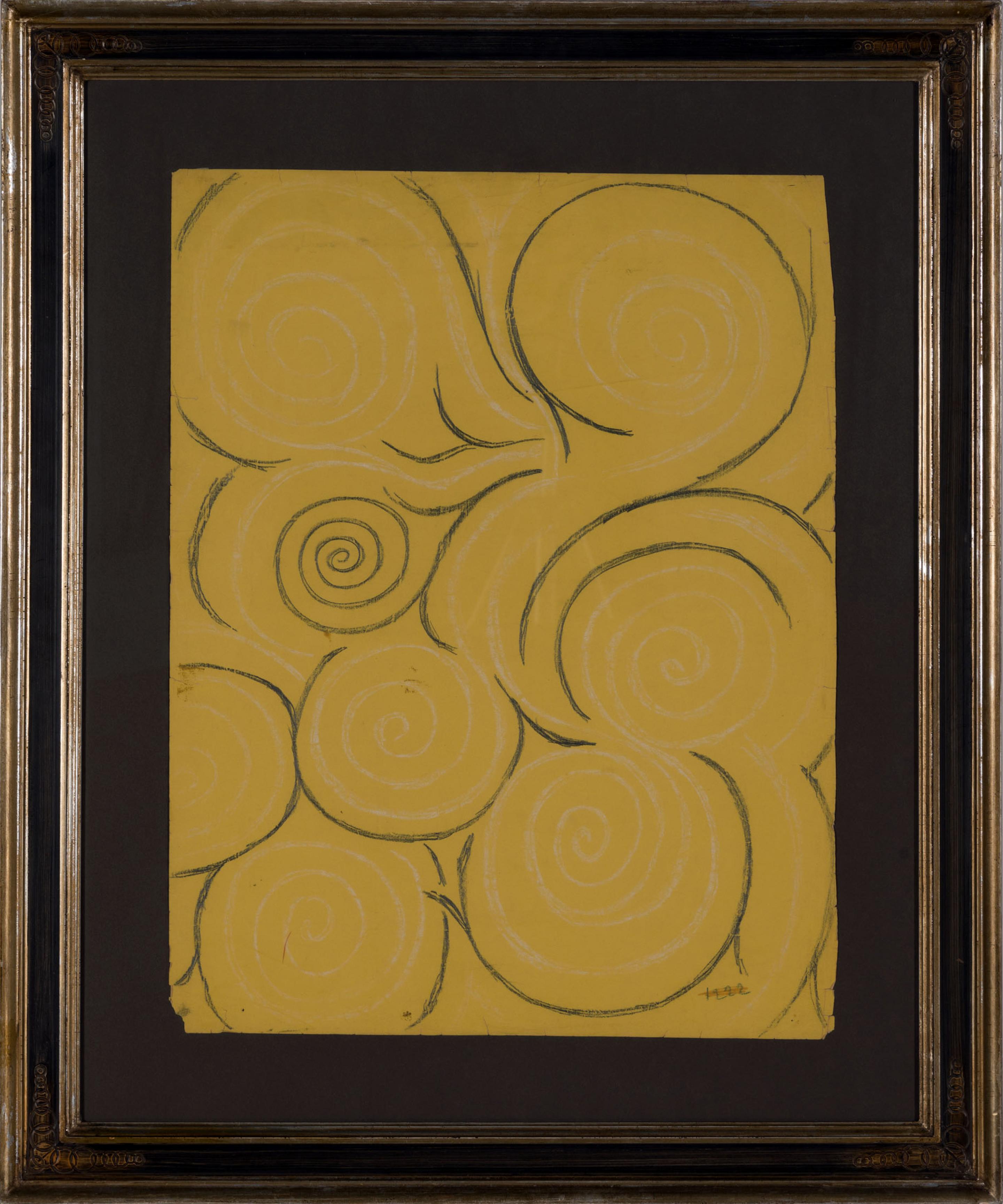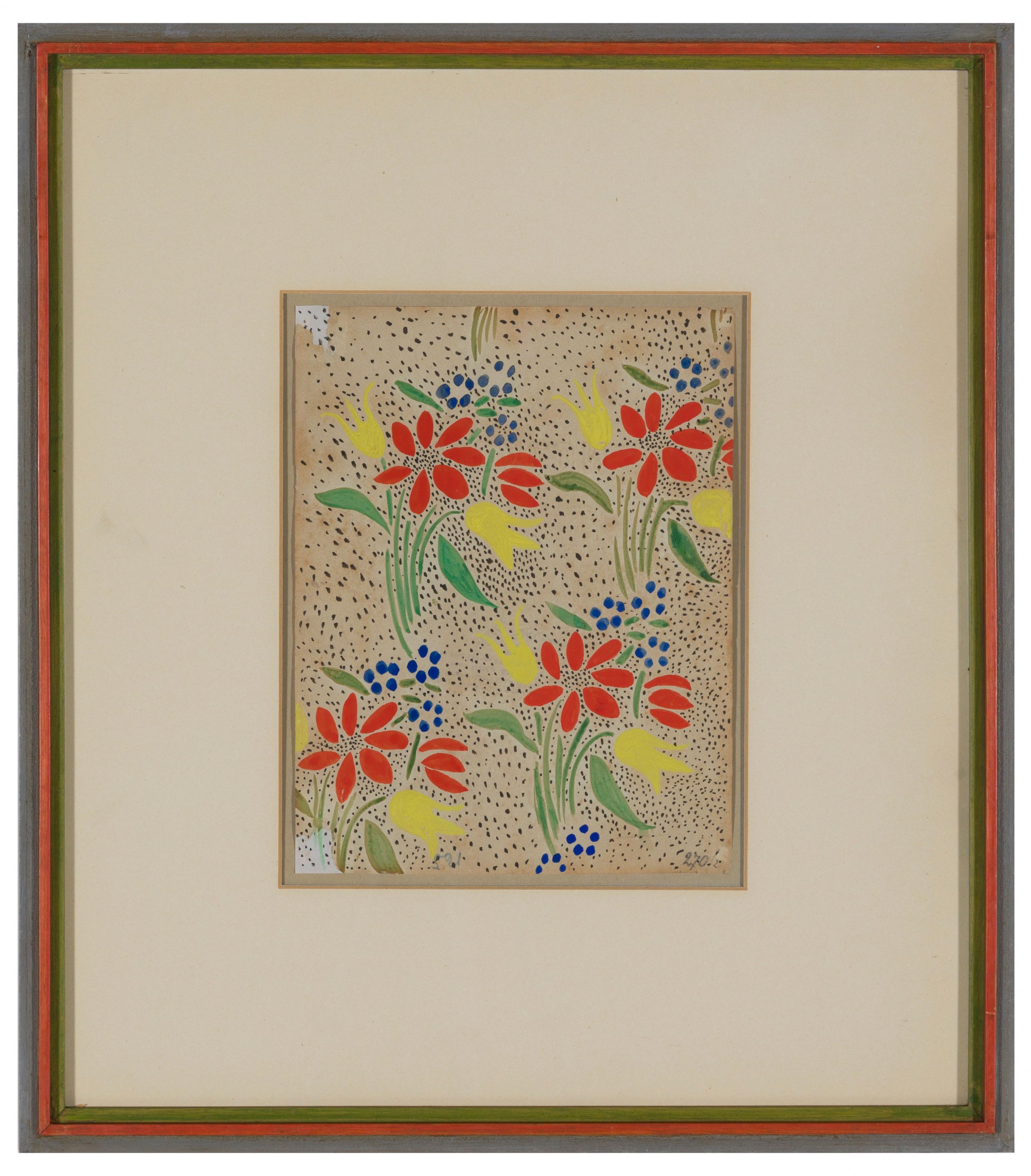SoniaDELAUNAY
About
Both prolific and innovative, Sonia Delaunay was one of the key female artists and designers of the European Avant-garde. Throughout her life she experimented with the language and rhythms of colour: “(…) with colours, it is poetry and the mystery of an inner life that emerges, radiates and communicates. On that basis, we can freely create a new language.”
Delaunay developed an experimental practice that was sympathetic to the Bauhaus school and its aim to bring art back into contact with the everyday, giving equal weight to design and fine art. Her vast and complex body of work ranges from drawings and paintings, illustrations and prints to stage design, textiles, furnishings, clothing and accessories. Throughout her life, Delaunay insisted that there should not be any discrimination between the so called major and minor arts, between “high” and “low” art. Through her cross-disciplinary practice Delaunay blurred the boundaries between these different art forms and bridged the gap between art and everyday life.
Sonia Delaunay was born in 1885 in Gradiesk, Ukraine, as Sara Stern. At the age of seven, Sara Stern became Sonia Terk when her working-class parents sent her to live with her wealthy uncle Henri Terk in St. Petersburg. Thanks to him she received a privileged and cosmopolitan upbringing replete with art lessons, private schools and international travel. Early on she wrote in her diary that “as soon as possible, (I) will settle in Paris or London, life is broader and happier there.”
Delaunay studied drawing at the Academy of Fine Arts in Karlsruhe and moved to Paris in 1905, where she attended the Académie de la Palette. Her early paintings were strongly influenced by Post-Impressionism, particularly the art of Van Gogh, Matisse, Gauguin, Rousseau and the Fauves. In 1908 she showed her works at the gallery of the German art dealer Wilhelm Uhde whom she married the following year. Theirs was a short-lived marriage as she met the artist Robert Delaunay a year later whom she eventually married in 1910.
Together, the artists started to experiment with colour as they realized that the pairing of two colours which are opposite one another on the colour wheel make both colours appear more vivid: green and red, blue and orange, violet and yellow - they developed a theory of colours, a mode of art that focused on their “simultaneous contrast” and they eventually called that Simultanism. The term is derived from the chemist’s Michel Eugène Chevreul’s book of colour theory from 1839 in which he identified the phenomenon of colours looking different depending on the colours around them.
In 1913 Delaunay announced the publication of the first simultaneous book, a collaboration between her and the writer Blaise Cendrars, in which she illustrated his poem Prose on the Trans-Siberian Railway and of Little Jehanne of France in a Leporello fold thereby mimicking the lengthy trans-Siberian train journey and extending Simultanism to the realms of images and words and ultimately space. The book alongside several decorative artworks would later be shown at the Autumn Salon in Berlin’s cutting edge gallery Der Sturm.
During World War I, the Delaunays lived between Spain and Portugal. The Iberian peninsula with its light, colours and folk art was deeply inspiring to Sonia Delaunay and reminded her of her native Ukraine. These reminiscences would shape her work in subsequent years.
The Russian Revolution brought an end to the finacial support that Delaunay received from her family in Russia. In need of other sources of income, she designed stage costumes for productions by Sergej Diaghilev’s Ballets Russes and for Tristan Tzara’s play Le coeur à gaz. She also designed private interiors for the Madrid aristocracy and ultra-modern outfits for Spanish socialites.
A catalyst for this multiform working practice became Casa Sonia, an interior decoration and fashion boutique in Madrid, which sold interior design, textiles, tapestries and fashion.
In 1921, the family moved back to Paris and four years later Delaunay registered the brand name Simultané in the US and France and launched the fashion house Maison Sonia which specialized in the sale of fashion, fabrics, carpets and furniture. From its beginnings as a theory of colour contrasts, Simultanism evolved into a method of artistic production and more broadly signified the polymorphism of Delaunay’s practice.
Delaunay was very careful how she marketed herself and, almost a century before the emergence of social media, the artist knew exactly how to control her image. She worked closely with certain photographers, like Florence Henri and Germaine Krull who were to stage shoots of herself and her models, mostly in front of vibrantly varicoloured backgrounds.
At the International Exposition of Modern Industrial and Decorative Arts in 1925, Jacques Heim, the French fashion and costume designer, and Delaunay set up a simultané boutique on Pont Alexandre III. There she met the owner of the Amsterdam luxury department store Metz & Co for whom she was to design fabrics until the 1960s.
In the 1930s, Delaunay joined the group Abstraction-Création, an association of abstract artists whose goal was to promote abstract art through group exhibitions.
For the 1937 World’s Fair in Paris she and Robert Delaunay worked together on the decoration of two pavillions, one devoted to air travel and the other one to railways.
After the war Delaunay became a board member of the Salon des Réalités Nouvelles, which was established as a successor to the Abstraction-Création movement.
From 1951, she was involved in the new association Groupe Espace which campaigned for the fusion of architecture and art to ultimately create a new environment appropriate to the new society that was to emerge in the modern postwar age.
Sonia Delaunay was the first living female artist to have had a retrospective at the Louvre in 1964.
Three years later the Musée National d’Art Moderne held a full-scale retrospective of her work.
Over the years, Delaunay has received several awards, among them the Order of the Legion of Honour.
In 1979, Sonia Delaunay died in Paris.
In the past two decades, solo exhibitions were held at the Thyssen-Bornemisza National Museum in Madrid; Kunstmuseum Krefeld – Haus Lange, Krefeld; Cooper-Hewitt Smithsonian Design Museum in New York; Musée d’Art Moderne de la Ville de Paris, Paris; Centre Pompidou, Paris; Kunsthalle Bielefeld and Tate Modern in London.
Several of her gouaches on paper were exhibited in the 2022 59th Venice Biennale The Milk of Dreams.
In 2024, the Bard Graduate Center Gallery in New York City organized the retrospective Living Art dedicated to Sonia Delaunay’s career as a painter, artisan and designer.
In 2025, the Musée d’art d’histoire Paul Eluard in Saint-Denis showcased Les Tissus Simultanés de Sonia Delaunay, an exhibition focused on her fabrics.
Many of the most prominent museums and public collections in the world hold work by Sonia Delaunay, among them are the Museum of Modern Art, New York; Tate Gallery, London; Victoria and Albert Museum, London; Centre Pompidou, Paris; Musée d’Art moderne de la Ville de Paris, Paris; Louisiana Museum of Modern Art, Humblebæk; Stedelijk Museum, Amsterdam; Museum Folkwang, Essen; Museum Ludwig, Cologne; Museo Nacional Thyssen-Bornemisza, Madrid; Museo Reina Sofia, Madrid.
Delaunay developed an experimental practice that was sympathetic to the Bauhaus school and its aim to bring art back into contact with the everyday, giving equal weight to design and fine art. Her vast and complex body of work ranges from drawings and paintings, illustrations and prints to stage design, textiles, furnishings, clothing and accessories. Throughout her life, Delaunay insisted that there should not be any discrimination between the so called major and minor arts, between “high” and “low” art. Through her cross-disciplinary practice Delaunay blurred the boundaries between these different art forms and bridged the gap between art and everyday life.
Sonia Delaunay was born in 1885 in Gradiesk, Ukraine, as Sara Stern. At the age of seven, Sara Stern became Sonia Terk when her working-class parents sent her to live with her wealthy uncle Henri Terk in St. Petersburg. Thanks to him she received a privileged and cosmopolitan upbringing replete with art lessons, private schools and international travel. Early on she wrote in her diary that “as soon as possible, (I) will settle in Paris or London, life is broader and happier there.”
Delaunay studied drawing at the Academy of Fine Arts in Karlsruhe and moved to Paris in 1905, where she attended the Académie de la Palette. Her early paintings were strongly influenced by Post-Impressionism, particularly the art of Van Gogh, Matisse, Gauguin, Rousseau and the Fauves. In 1908 she showed her works at the gallery of the German art dealer Wilhelm Uhde whom she married the following year. Theirs was a short-lived marriage as she met the artist Robert Delaunay a year later whom she eventually married in 1910.
Together, the artists started to experiment with colour as they realized that the pairing of two colours which are opposite one another on the colour wheel make both colours appear more vivid: green and red, blue and orange, violet and yellow - they developed a theory of colours, a mode of art that focused on their “simultaneous contrast” and they eventually called that Simultanism. The term is derived from the chemist’s Michel Eugène Chevreul’s book of colour theory from 1839 in which he identified the phenomenon of colours looking different depending on the colours around them.
In 1913 Delaunay announced the publication of the first simultaneous book, a collaboration between her and the writer Blaise Cendrars, in which she illustrated his poem Prose on the Trans-Siberian Railway and of Little Jehanne of France in a Leporello fold thereby mimicking the lengthy trans-Siberian train journey and extending Simultanism to the realms of images and words and ultimately space. The book alongside several decorative artworks would later be shown at the Autumn Salon in Berlin’s cutting edge gallery Der Sturm.
During World War I, the Delaunays lived between Spain and Portugal. The Iberian peninsula with its light, colours and folk art was deeply inspiring to Sonia Delaunay and reminded her of her native Ukraine. These reminiscences would shape her work in subsequent years.
The Russian Revolution brought an end to the finacial support that Delaunay received from her family in Russia. In need of other sources of income, she designed stage costumes for productions by Sergej Diaghilev’s Ballets Russes and for Tristan Tzara’s play Le coeur à gaz. She also designed private interiors for the Madrid aristocracy and ultra-modern outfits for Spanish socialites.
A catalyst for this multiform working practice became Casa Sonia, an interior decoration and fashion boutique in Madrid, which sold interior design, textiles, tapestries and fashion.
In 1921, the family moved back to Paris and four years later Delaunay registered the brand name Simultané in the US and France and launched the fashion house Maison Sonia which specialized in the sale of fashion, fabrics, carpets and furniture. From its beginnings as a theory of colour contrasts, Simultanism evolved into a method of artistic production and more broadly signified the polymorphism of Delaunay’s practice.
Delaunay was very careful how she marketed herself and, almost a century before the emergence of social media, the artist knew exactly how to control her image. She worked closely with certain photographers, like Florence Henri and Germaine Krull who were to stage shoots of herself and her models, mostly in front of vibrantly varicoloured backgrounds.
At the International Exposition of Modern Industrial and Decorative Arts in 1925, Jacques Heim, the French fashion and costume designer, and Delaunay set up a simultané boutique on Pont Alexandre III. There she met the owner of the Amsterdam luxury department store Metz & Co for whom she was to design fabrics until the 1960s.
In the 1930s, Delaunay joined the group Abstraction-Création, an association of abstract artists whose goal was to promote abstract art through group exhibitions.
For the 1937 World’s Fair in Paris she and Robert Delaunay worked together on the decoration of two pavillions, one devoted to air travel and the other one to railways.
After the war Delaunay became a board member of the Salon des Réalités Nouvelles, which was established as a successor to the Abstraction-Création movement.
From 1951, she was involved in the new association Groupe Espace which campaigned for the fusion of architecture and art to ultimately create a new environment appropriate to the new society that was to emerge in the modern postwar age.
Sonia Delaunay was the first living female artist to have had a retrospective at the Louvre in 1964.
Three years later the Musée National d’Art Moderne held a full-scale retrospective of her work.
Over the years, Delaunay has received several awards, among them the Order of the Legion of Honour.
In 1979, Sonia Delaunay died in Paris.
In the past two decades, solo exhibitions were held at the Thyssen-Bornemisza National Museum in Madrid; Kunstmuseum Krefeld – Haus Lange, Krefeld; Cooper-Hewitt Smithsonian Design Museum in New York; Musée d’Art Moderne de la Ville de Paris, Paris; Centre Pompidou, Paris; Kunsthalle Bielefeld and Tate Modern in London.
Several of her gouaches on paper were exhibited in the 2022 59th Venice Biennale The Milk of Dreams.
In 2024, the Bard Graduate Center Gallery in New York City organized the retrospective Living Art dedicated to Sonia Delaunay’s career as a painter, artisan and designer.
In 2025, the Musée d’art d’histoire Paul Eluard in Saint-Denis showcased Les Tissus Simultanés de Sonia Delaunay, an exhibition focused on her fabrics.
Many of the most prominent museums and public collections in the world hold work by Sonia Delaunay, among them are the Museum of Modern Art, New York; Tate Gallery, London; Victoria and Albert Museum, London; Centre Pompidou, Paris; Musée d’Art moderne de la Ville de Paris, Paris; Louisiana Museum of Modern Art, Humblebæk; Stedelijk Museum, Amsterdam; Museum Folkwang, Essen; Museum Ludwig, Cologne; Museo Nacional Thyssen-Bornemisza, Madrid; Museo Reina Sofia, Madrid.
